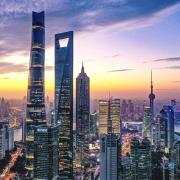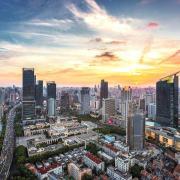Huangpu
HUANGPU

As one of China’s four direct-administered municipalities, there’s no other city like Shanghai. Rich in art and culture as well as international relations history, every corner of Shanghai has a story to tell. The city is also one of Asia’s earliest contemporary art hubs, attracting many international galleries and artists while domestically growing and developing its own institutions. Shanghai’s emphasis on culture has also seen the growth of some key districts such as the West Bund, with many other new projects currently in the making.
The Shanghai Municipal People’s Government is situated in Huangpu, making it the heart of the city. Although unfamiliar to many, Huangpu was also Shanghai’s finance district before the establishment of Lujiazui in more recent times. Huangpu’s large land mass also houses many of Shanghai’s top attractions, such as the Bund, People’s Square, Yuyuan, and the Nanjing Road commercial district. Additionally, as Expo 2010 Shanghai was primarily held in Huangpu, the many pavilions from the event have now been transformed into new cultural establishments.

Fosun Foundation 复星艺术中心
The Bund Finance Center that houses the Fosun Foundation is impossible to miss. Designed by Foster & Partners and Thomas Heatherwick, the building is enveloped by 675 vertical pipes in three layers, constantly glistening in light. A visual element that combines East and West, it resembles both an ancient Chinese crown and a Western harp; because the three overlapping layers of pipes slowly rotate around the building for several hours a day, the building has also been likened to Chinese theatre curtains. Having opened its doors in 2012, the Foundation has been host to large-scale art exhibitions year-round, along with many other cultural and educational events, attracting art-lovers and cultivating new ones.

Rockbund Art Museum (RAM) 上海外滩美术馆
Located in the heart of Shanghai where Suzhou Creek flows into the Huangpu River on the Bund, the Rockbund Art Museum is housed within an Art Deco building that traces its roots to the Royal Asiatic Society (RAS) in 1932. Back then, the RAS liaised with international galleries, museums, and scholars, creating an artistic rapport between the East and the West. Established in 2010, the RAM presently continues this mission in its revitalised historical venue, building a borderless art community by showcasing diverse modern works all year round.

Ota Fine Arts
Ota Fine Arts was established in Tokyo in 1994, and in 2017, it expanded its presence with a new gallery space in Shanghai. Designed by the Shanghai-based architecture and design firm Neri and Hu, the gallery provides a platform to showcase diverse works of art from Asia and present their rich cultural histories. With a history spanning over 25 years, Ota Fine Arts has established itself as a pioneer in Japanese contemporary art. From its inception, the gallery has been dedicated to promoting a range of Japanese artists, including internationally acclaimed figures like Yayoi Kusama.

Almine Rech Gallery 阿尔敏·莱希
Known as ‘Museum Road’ from 1886 to 1943, Huqiu Road continues to hold a prominent place in Shanghai’s art landscape with its close proximity to the city’s major museums and auction houses, including Rockbund Art Museum, Fosun Foundation and Christie’s. Located on the 2nd floor of the historic Amber Building, French dealer Almine Rech Gallery’s 5th global venue in 2019 is certainly worth a visit – the building was a former warehouse built in 1937 that used by the Central Bank of China during the Republican period. With an almost exclusive focus on global contemporary art, Rech has not only brought many renowned and emerging works to Shanghai audiences, but has joined the ranks of mega-galleries to have opened shop in Shanghai, such as Perrotin and Lisson (read on!)

Perrotin 贝浩登
A name well-known in the contemporary art world, French dealer Emmanuel Perrotin chose Shanghai as its 18th space in the span of 28 years. Opened in 2018, the gallery is also located in the Amber Building and occupies the third floor. Conceived by Hong Kong design studio AFSO, the 1,200 square meter gallery space includes a mezzanine and several exhibition rooms; in keeping with the building’s modernist elegance, original 1930s elements of the building were preserved, including its 6 metre-high wooden beam ceiling. Besides the art, be sure to pay attention to Perrotin’s interior architecture.

Rén Space 仁庐
Established in 2013, Rén Space is an experimental platform and ‘laboratory’ for artists and designers. Not only do they host exhibitions, but they also provide initiation, funding and realisation support to innovative creatives in need. The worn-out, western style building that the gallery occupies belies a much deeper purpose. Rén Space curates deep, artistic conversation that engages the international scene with local culture.

Power Station of Art (PSA) 上海当代艺术博物馆
From the Nanshi Power Plant to the Pavilion of Future during the 2010 Shanghai World Expo, to what is now China’s first state-owned contemporary art museum since 2012, the PSA is a must-visit for art lovers in Shanghai. Located on the banks of the Huangpu River with a 165-metre-tall chimney, the museum is hard to miss. Apart from hosting Shanghai’s Biennale, it also mounts large-scale exhibitions year-round, ranging from both Chinese and international artists to architecture and jewelry.

chi K11 Art Museum chi K11 美术馆
Founded by Adrian Cheng in 2010, the K11 Art Foundation (KAF) is a non-profit organisation that promotes the development of contemporary art. Operating under this organisation is the chi K11 Art Museum, an ‘artistic playground of sorts’, connecting almost seamlessly to the K11 art mall in the city. Covering a total of 3,000 m2, chi K11 regularly hosts contemporary art exhibitions as well as forums and workshops. It also partners with other leading museums around the world to provide public art to an international audience.

Shanghai Museum of Contemporary Art (MoCA)
Founded in 2005, the MoCA is one of the most iconic art spaces in Shanghai, and is involved in projects of all scales within its space as well as throughout the city. It hosts regular exhibitions, curates public art, and continuously builds programmes that educate and nurture young Chinese artists. MoCA has been creating an inclusive and diverse space for art-lovers in Shanghai since its establishment and continues to evolve to better serve its audience.

Jiushi Art Museum 上海久事美术馆
Jiushi Art Museum has three different venues scattered along the Huangpu River: the Shanghai Jiushi Art Museum, Bund 18 Jiushi Art Gallery and the Shanghai Jiushi Art Salon. Opened in 2018, its art museum is naturally the largest exhibition space, and has large-scale themed shows year-round, while the gallery normally hosts presentations by individual artists. Jiushi’s vision is simple: to exhibit artworks on the academic level, and also to encourage audience engagement. Kindly note that the opening hours of each venue differ, depending on location.

Art+ Shanghai Gallery
Art+ Shanghai Gallery, founded in October 2007, occupies a historical YIFENG building. Specialising in contemporary Asian artists, the gallery showcases both established and emerging talents. With a focus on unique artistic styles and high-quality artwork, it actively contributes to the development of contemporary art. The gallery stays attuned to the contemporary Chinese art scene, serving as a platform for emerging and mid-career artists and reflecting the diverse artistic expressions of the region.

Liang Project
Established in 2014 and located in the M50 Art Industrial Park, Liang Project is dedicated to promoting Asian contemporary art through global exhibitions and art programmes. The focus is on supporting experienced artists and nurturing emerging talents, as well as facilitating creative art projects that explore the intersection of traditional and contemporary art within an international and multicultural context.

Lisson Gallery 里森画廊
Lisson Gallery’s founder, Nicholas Logsdail, did much to establish London as a gallery mecca when he opened his first space in the Lisson Grove neighborhood in 1967. The gallery’s opening in Shanghai in 2019 is a testament to his continuous dedication to present the most cutting-edge contemporary art to the rest of the world. Also situated in the same historical Amber Building as Perrotin and Almine Rech, Lisson often circulates exhibitions between its global locations and displays works of key modern figures in the art world. After seeing Almine Rech and Perrotin, a visit to Lisson completes your visit to the Amber Building.

Matthew Liu Fine Arts 德玉堂
Matthew Liu Fine Arts was established in 2014, and the eponymous gallery focuses on contemporary artists whose works fuse the classical philosophies and aesthetics of Asian Art with the theories, materials, and methods of contemporary Western art. Housed amongst international galleries along the Bund, the gallery presents around 6 exhibitions a year, and is an active and vibrant part of the Shanghai art scene. In recent years, it has also presented the works of emerging young artists as part of its expanding programme.

Bund One Art Museum 东一美术馆
While you’re in this cultural corridor along the Huangpu River and overlooking the Lujiazui skyline, pay a visit this new museuum in a former industrial area that the local government has invested billions to revitalise. Bund One Art Museum opened in 2019 – a landmark year with major international galleries as well as Paris’s Centre Pompidou setting up shop in Shanghai. Fostering artistic exchanges with other museums around the world, its most recent retrospective on Claude Monet and Impressionism was very well-received.






